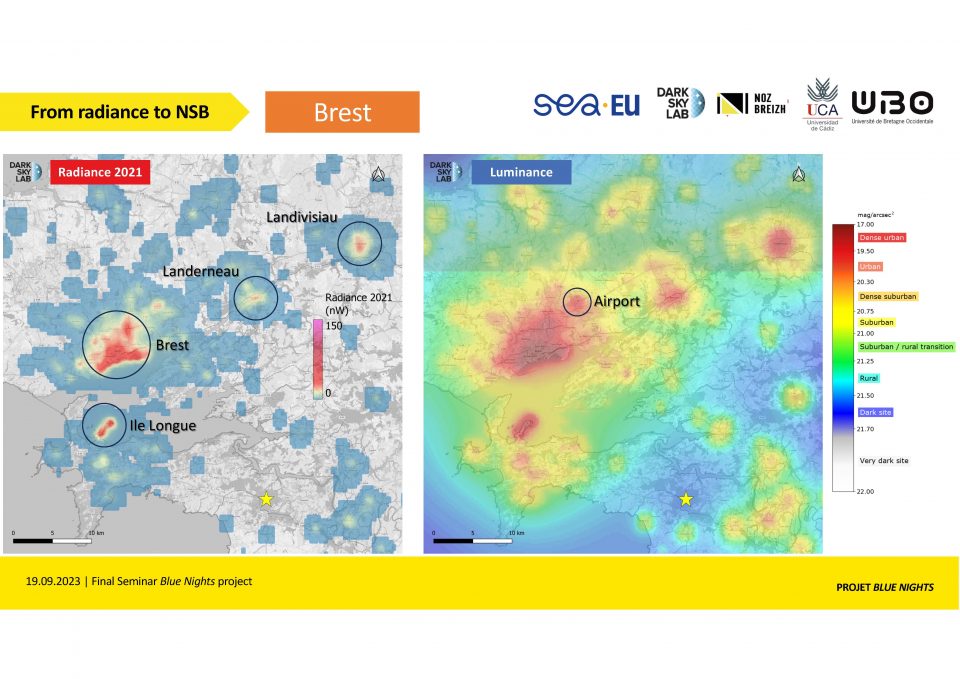BRE06: Noz Breizh - Blue Nights: Impact of Artificial Lighting in Terms of Light Pollution in Coastal Tourist Areas
- Projet Blue Nights
Brest
- Organisation
- ADEUPa Brest Bretagne
- Guillaume Chérel
Since 2017, Brest Métropole has been committed to establishing a Nighttime Ambience Coherence Plan (SCAN). Thanks to its expertise in public lighting, Brest Métropole aims to address contemporary challenges related to the comfort and safety of the population, energy conservation and efficiency, as well as environmental preservation. To achieve this, it collaborates with various municipal services such as mobility, urban planning, urban tranquility, culture, events, heritage, and urban ecology. To tackle these various challenges, collaborations have been established between Brest Métropole, researchers associated with the Noz Breizh Chair at the University of Western Brittany, and the consulting firm DarkSkyLab. These collaborations highlight that data production and exchanges with the research community play a crucial role in decisions related to urban planning and management. What is the impact of artificial lighting in terms of light pollution in coastal tourist areas? This is the question being addressed by the Blue Nights project, funded by the SEA-EU Alliance within the UBO. This project studies the impact of artificial lighting in terms of light pollution and its connection to tourist activity in coastal areas. Specifically, the project aims to measure the correlation between tourist activity and light pollution. To do this, it will be necessary to focus on coastal areas with high tourist pressure. Using satellite radiance data from 2022 and 2023 (VIIRS-DNB data from the Earth Observation Group), initial comparative analyses have been conducted between Brittany (France), Cádiz (Spain), and Malta. The project's objective will be to create a reproducible method that can be applied to different regions using available data. The UBO and the University of Cádiz have expressed interest in collaborating on the Noz Breizh project, and a local edition of the Ocean Hackathon is taking place in El Puerto de Santa María (Cádiz). This context could allow for test territories located in both Brittany and southern Spain.
- What the challenge owner would like to develop over 48h
- Reproducible analysis method across different territories based on the analysis of available data.
- Which skills the challenge owner is looking for
- data analyst
socio-economist



